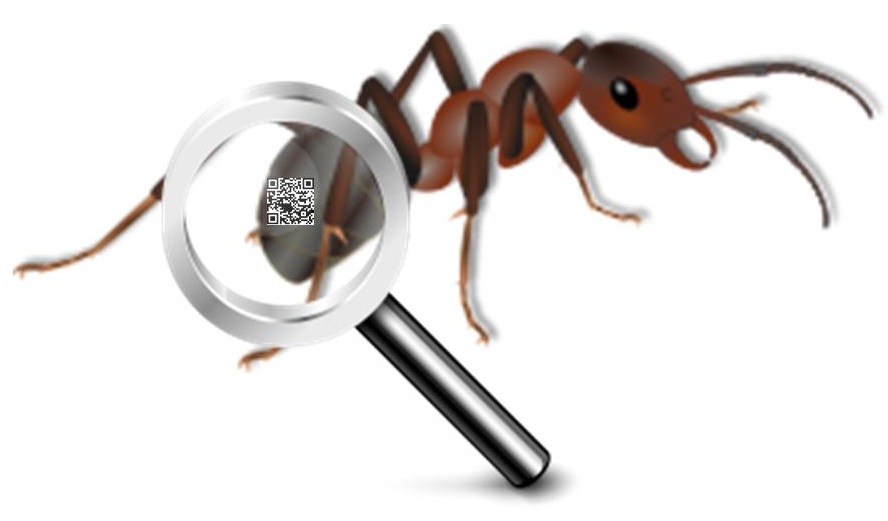These quick response codes can help items to find their way back to their owners.
A startup company called My Lost Property has now been created by the parents of a boy who needed a way to find items that had gone missing, using inexpensive QR codes to make sure that belongings didn’t have to be replaced.
The last straw occurred when the son of the creators – the Sheedy family – lost his school blazer that cost $250.
Spencer Sheedy and his wife Rita recognized that while it is frustrating that their own two kids always had their possessions go missing, their children were far from the only ones who had this happen. It was this realization that encouraged the couple to create My Lost Property. Though the concept is quite simple as it is based on the use of QR codes, it is more innovative than simply using stickers and iron-on labels.
These QR codes are each unique and are registered on a website so that when the item is found it can be returned.
 A missing item’s quick response code can be scanned by someone who finds it. They can then enter the location of the item, which will be automatically texted to the parents so that a pick-up can be arranged. The original concept had involved only stickers for the Sheedy kids. However, it didn’t take long before they found themselves creating labels, keyrings, stickers, and other barcodes for friends. Soon, it became evident that they had a business.
A missing item’s quick response code can be scanned by someone who finds it. They can then enter the location of the item, which will be automatically texted to the parents so that a pick-up can be arranged. The original concept had involved only stickers for the Sheedy kids. However, it didn’t take long before they found themselves creating labels, keyrings, stickers, and other barcodes for friends. Soon, it became evident that they had a business.
Since then, Mr. Sheedy had brought his barcodes and My Lost Property idea to the local schools. He has managed to create a sponsorship arrangement through Schoolzine, which is an online company that produces bulk school newsletters. According to Sheedy, “Schools have been really responsive. They like the simplicity of it, and lost property is such a problem for them.” He explained that he just wants parents to be able to find out about it.
The Sheedy’s knew that they could solve a very expensive problem for many parents and children with the simplicity and ease of QR codes. “When that $250 blazer went missing, we thought we needed to do something more than just the hit-and-miss putting a name on there and hoping it will come back. This just gives you a bit more of a chance of it coming back,” said Mr. Sheedy.
 Barcoded insects were followed with a computer to better understand their social structure.
Barcoded insects were followed with a computer to better understand their social structure.
The results of a recent study from researchers at the University of Lausanne in Switzerland have just been released, revealing a very unique use for QR codes, a form of barcode that is typically seen on product labels and in print advertising, not on the backs of insects.
A colony of ants had its members labeled so that their behaviors could be accurately tracked.
The research started with the application of QR codes to the backs of over one hundred ants within a lab. The paper containing the results of the study were published in the journal called Science. Within it, the Swiss researchers detailed their 41 days of tracking of the lives of the individual ants so that they could develop a better understanding of their social structure.
This is quite a unique use for QR codes, but is a part of an increasing trend to apply it to alternate uses.
The research used the QR codes to generate more than 2.4 billion readings, which produced a record of over 9.4 million different interactions among the ant colony members. When analyzed through a computer, it revealed that up to 40 percent of the worker ants had the specific activity of caring for the queen of the colony, as well as her babies that had just recently been born. Another 30 percent of the colony’s workers were recorded to have been responsible for colony housecleaning. The remaining 30 percent foraged for food to feed all of the ants.
What the QR codes allowed the researchers to determine was the progress of an individual ant’s life. They discovered through the barcodes that any single ant did not necessarily keep the same job throughout its entire lifetime. They progress from one task to the next as they age. Though the typical progression was from caretaker of the queen and her offspring, to cleaner, to forager for food, there was deviation among this trend as there were younger ants who foraged and older ones who were caretakers.
Without the QR codes, the researchers did not have any other way to examine the individual lives and social interactions of the ants. This way, they could monitor what they individuals did throughout their lives instead of watching the colony as a whole.
 A missing item’s quick response code can be scanned by someone who finds it. They can then enter the location of the item, which will be automatically texted to the parents so that a pick-up can be arranged. The original concept had involved only stickers for the Sheedy kids. However, it didn’t take long before they found themselves creating labels, keyrings, stickers, and other barcodes for friends. Soon, it became evident that they had a business.
A missing item’s quick response code can be scanned by someone who finds it. They can then enter the location of the item, which will be automatically texted to the parents so that a pick-up can be arranged. The original concept had involved only stickers for the Sheedy kids. However, it didn’t take long before they found themselves creating labels, keyrings, stickers, and other barcodes for friends. Soon, it became evident that they had a business.
 Barcoded insects were followed with a computer to better understand their social structure.
Barcoded insects were followed with a computer to better understand their social structure.